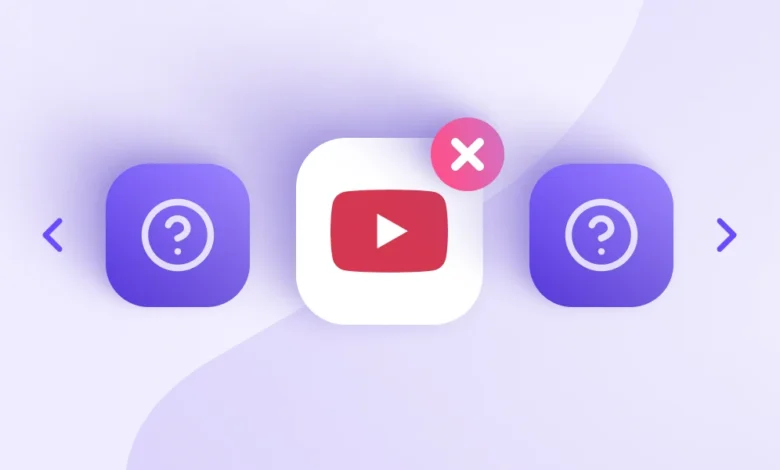YouTube Alternative: Exploring the Best Video Platforms for Creators and Viewers

Introduction
youtube alternative has long been the dominant player in the video streaming space, with billions of daily views and millions of content creators worldwide. However, over the past few years, there has been a noticeable shift in the video streaming landscape, with many creators and viewers turning to YouTube alternatives. Whether driven by issues like censorship, privacy concerns, or dissatisfaction with YouTube’s monetization policies, alternatives are on the rise. As a result, there are now several video platforms offering unique features that appeal to both creators and viewers alike.
In this article, we’ll dive deep into some of the best YouTube alternatives, focusing on what makes each platform unique, the features they offer, and how they stack up against YouTube. We’ll also explore the best ways to transition from YouTube to these platforms, helping both viewers and creators find a new home for their video content.
Top YouTube Alternatives for Content Creators
Vimeo: A Platform for Professionals
Vimeo has positioned itself as one of the best alternatives for professional content creators. With its high-quality video hosting and an array of features catered to filmmakers, artists, and video professionals, Vimeo has grown into a top choice for creators who want a more refined platform than YouTube. One of the main advantages of Vimeo is its commitment to providing ad-free content, meaning creators and viewers can enjoy a seamless video experience.
Moreover, Vimeo offers superior video quality, with support for 4K resolution, which is ideal for creators who prioritize high-definition content. Its Pro, Business, and Premium plans also provide advanced features like video analytics, custom branding, and the ability to sell or rent videos directly to viewers. These features make Vimeo an ideal platform for filmmakers, musicians, and other content creators who want more control over their work and its distribution.
For those serious about building a brand or showcasing high-quality video projects, Vimeo is a clear YouTube alternative. The platform’s supportive community, premium features, and lack of advertising make it a perfect fit for professionals in the creative industry.
Dailymotion: A Global Reach with a Different Vibe
Dailymotion may not be as well-known as YouTube, but it’s still a solid alternative for content creators seeking a different audience. Founded in 2005, Dailymotion offers many of the same features as YouTube, such as uploading, sharing, and commenting on videos. However, Dailymotion has a more international reach, with the platform being particularly popular in Europe, Asia, and Latin America. For creators looking to tap into global markets, Dailymotion offers a great alternative.
Dailymotion also emphasizes a more curated approach to content, focusing on premium content and partnerships with major media companies. This makes the platform an attractive choice for creators who want to showcase high-quality content in a less cluttered environment compared to YouTube. Additionally, Dailymotion offers monetization options for creators through ads, with the ability to choose which ads appear on their videos. While not as lucrative as YouTube, these options still provide a steady revenue stream for creators.
For creators looking to diversify their audience and gain international exposure, Dailymotion is an ideal platform.
Twitch: The Go-To Platform for Streamers
Twitch is one of the most popular alternatives to YouTube for live streaming, particularly in the gaming and entertainment niches. The platform allows content creators to stream live, engage with their audience in real-time, and build communities around their content. Twitch’s audience is primarily made up of gamers, but over the years, it has expanded to include streams about lifestyle, art, cooking, music, and more.
Unlike YouTube, where live streaming is just one feature among many, Twitch is designed specifically for live content. The platform allows for interactive elements, such as live chat, donations, and subscriber-only content, which help foster community engagement. Twitch also has a robust monetization system, including advertising, subscriptions, and donations from viewers. For creators who are interested in a more interactive and live-centric video experience, Twitch is one of the best YouTube alternatives.
Moreover, Twitch’s emphasis on community-building and live interaction sets it apart from YouTube, where creators often feel distant from their audience. For creators looking to forge stronger connections with viewers in real-time, Twitch is an excellent choice.
BitChute: A Platform Focused on Free Speech
BitChute has gained attention as an alternative to YouTube for creators who prioritize free speech and censorship resistance. The platform allows users to upload videos without the heavy content moderation often seen on YouTube. While BitChute’s lack of censorship makes it an attractive platform for some, it’s important to note that it has drawn criticism for hosting controversial and extremist content.
Despite this, BitChute continues to attract creators who feel their content is unfairly restricted on YouTube, particularly in the political and social commentary spaces. BitChute operates on a peer-to-peer network, which means videos are hosted by users rather than a central server. This decentralized model helps avoid censorship and gives creators more freedom to express their views.
For creators seeking a platform that values free expression and minimal content restrictions, BitChute remains a viable YouTube alternative.
Triller: Competing with TikTok
Triller is an up-and-coming video platform that has gained significant traction in the short-form video space, primarily competing with TikTok. However, it also serves as a viable alternative to YouTube for creators looking to produce and share short videos. Triller’s simple interface and editing tools make it easy for users to create high-quality content quickly, while its algorithm ensures that popular videos get exposure.
The platform’s focus on short-form content makes it appealing for creators who are looking to create quick, viral videos rather than long-form content. Triller also offers opportunities for monetization through brand partnerships and influencer marketing, which can be an attractive option for creators who want to generate income from their content.
With a growing user base and more features being added, Triller is positioning itself as one of the key players in the video-sharing world, making it an excellent YouTube alternative for those focused on short-form, viral content.
Best YouTube Alternatives for Viewers
PeerTube: Decentralized Streaming for Privacy-Conscious Users
PeerTube is a decentralized video streaming platform that allows users to host and share videos on their own servers. Unlike centralized platforms like YouTube, where all the data is controlled by a single entity, PeerTube operates through a network of independent instances, each with its own community guidelines. This decentralized model offers greater privacy and control over content.
For viewers concerned about data privacy, censorship, and advertising, PeerTube is an appealing option. PeerTube doesn’t track users or serve targeted ads, making it a more privacy-respecting choice than YouTube. Additionally, the platform’s open-source nature means that users have more control over the content they consume, with the ability to find niche communities that may not be available on YouTube.
While PeerTube doesn’t have the same massive content library as YouTube, its community-driven model and focus on privacy make it a worthwhile alternative for those looking for a more personalized and secure video experience.
IGTV: Instagram’s Alternative to YouTube for Mobile Users
Instagram’s IGTV is a great YouTube alternative for viewers who prefer watching videos on mobile devices. IGTV allows users to upload longer videos (up to 60 minutes for verified accounts) and offers a more mobile-friendly video-watching experience than YouTube’s traditional app. Since Instagram is primarily a mobile app, IGTV fits seamlessly into the platform’s ecosystem, allowing users to discover videos while scrolling through their feeds.
One of IGTV’s key advantages is its integration with Instagram’s social features, such as liking, commenting, and sharing videos directly on your feed or in stories. This makes IGTV an attractive option for users who are already active on Instagram and want to consume long-form video content within the app.
For viewers who are looking for an easy, social experience while watching videos on their mobile devices, IGTV is a top YouTube alternative.
Facebook Watch: Video Content for Social Media Enthusiasts
Facebook Watch is Facebook’s answer to YouTube, offering a platform for users to upload and share video content with their friends and followers. While Facebook is primarily a social media platform, Facebook Watch focuses on providing high-quality video content, including live streams, original shows, and user-generated content.
What sets Facebook Watch apart from YouTube is its social integration. Videos on Facebook Watch can be easily shared, liked, and commented on, allowing viewers to interact with their friends and see what videos are trending in their social circles. For those already active on Facebook, Facebook Watch offers a seamless and familiar experience.
If you’re a Facebook user who enjoys watching videos while engaging with your social network, Facebook Watch is an excellent alternative to YouTube.
Rumble: A Video Platform with a Focus on Free Speech
Rumble is another video platform that emphasizes free speech and user-generated content, making it a popular alternative to YouTube. The platform has grown significantly in recent years, particularly among conservative voices and creators who feel that their content is unfairly censored on YouTube.
Rumble’s monetization options allow creators to earn revenue from ads, subscriptions, and even licensing their videos to news outlets. For viewers, Rumble offers a wide range of content, from political commentary to viral videos and everything in between. Although the platform has a smaller library than YouTube, its focus on free expression and monetization opportunities makes it a strong competitor.
For viewers who prioritize free speech and diverse content, Rumble offers a great alternative to YouTube.
Vimeo On Demand: Exclusive Content for Serious Viewers
Vimeo On Demand allows viewers to access premium, paid content directly from Vimeo creators. While Vimeo’s main platform focuses on high-quality video hosting, Vimeo On Demand enables creators to sell or rent their videos to audiences. This makes it a great platform for independent filmmakers, musicians, and other creators who want to monetize their content while providing exclusive access to viewers.
For those willing to pay for quality content, Vimeo On Demand provides a more curated and ad-free experience compared to YouTube. With its focus on high-end, independent content, Vimeo On Demand is a perfect alternative for viewers who appreciate unique and artistic films or documentaries.
Key Features to Look for in a YouTube Alternative
Monetization Options
One of the most important considerations when choosing a YouTube alternative is how creators can monetize their content. YouTube offers revenue through ads, super chats, channel memberships, and YouTube Premium revenue. However, many creators have found these options limited or restrictive, especially when it comes to the percentage of revenue YouTube takes.
Platforms like Vimeo, Dailymotion, and Rumble offer alternative monetization strategies, such as direct video sales, paid subscriptions, or revenue-sharing through ads. Creators need to consider which platform offers the best opportunities to earn money based on their audience size, content type, and engagement strategies.
Content Moderation & Censorship
Content moderation and censorship are major concerns for both creators and viewers. YouTube has faced criticism for its strict content policies, which some feel limit free expression. In contrast, platforms like BitChute, Rumble, and PeerTube are designed with less content regulation, giving creators more freedom to post controversial or niche content.
Viewers who want to avoid content censorship might prefer platforms like Rumble or BitChute. However, these platforms may also host content that some users might find offensive or controversial, which is something to consider when choosing a video streaming platform.
User Interface & Experience
A platform’s user interface and overall experience can make or break a video streaming site. YouTube’s interface is familiar to most users, but other platforms like Vimeo, Dailymotion, and IGTV offer more refined, less cluttered user experiences. If you’re looking for a more polished and user-friendly interface, Vimeo or IGTV might be better options. On the other hand, platforms like Rumble and BitChute might not offer the same level of sophistication, but they prioritize free expression and diverse content.
Video Quality & Streaming
For content creators and viewers, video quality is paramount. Vimeo excels in offering superior video quality, including 4K video, which YouTube is gradually rolling out. Twitch, on the other hand, focuses more on live streaming than video quality, which is something to consider if you’re a creator looking for high-definition content delivery.
For viewers who care about video quality, it’s essential to check the platform’s supported resolutions and streaming performance before committing. YouTube alternatives like Vimeo, Dailymotion, and PeerTube provide excellent video quality, while other platforms might focus more on live interaction or mobile-first viewing experiences.
Community & Audience Engagement
Creating and maintaining an audience is vital for any content creator. YouTube offers several features like comments, likes, and shares, but platforms like Twitch and Facebook Watch provide more engaging and interactive experiences. Live chat, donations, and interactive features are essential for building strong communities around your content. Whether you’re looking to engage in real-time discussions or build a subscriber base, some platforms offer more robust audience engagement tools than others.
How to Transition from YouTube to an Alternative Platform
Switching from YouTube to another platform can be daunting, especially for established creators. However, the process doesn’t have to be difficult. Many YouTube alternatives offer easy-to-use tools for content creators to upload and manage videos.
The first step is understanding the platform’s requirements and setting up a profile. Most platforms have specific file formats or video resolutions that creators need to adhere to. Next, focus on monetization strategies. Whether it’s through direct video sales, paid subscriptions, or ads, learning how to generate revenue on your new platform is key to maintaining income levels.
One of the challenges when transitioning is maintaining your audience. YouTube’s massive user base makes it easy for creators to find and retain an audience, but on smaller platforms, you may need to work harder to build a following. Sharing your new platform links on social media, engaging with your audience directly, and collaborating with other creators are great ways to increase visibility.
Conclusion
While YouTube remains the dominant video platform, there are numerous alternatives that cater to different types of content creators and viewers. Whether you’re a creator looking for more monetization options, greater creative freedom, or an engaging community, there’s a YouTube alternative that fits your needs. From professional-grade platforms like Vimeo to live-streaming giants like Twitch, these alternatives offer unique features that can enrich your video experience.
Ultimately, the right platform for you depends on your priorities—whether it’s quality, freedom of expression, or monetization. As the video streaming landscape continues to evolve, exploring YouTube alternatives can help you find a platform that better suits your goals and values.



